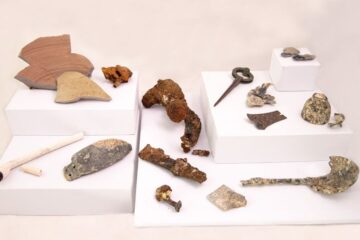Boesidien, Samanuddin and Abdole Hamid were members of the Netherlands Merchant Navy during World War II and are interred at Toowong Cemetery in Brisbane. Their service highlights the significant role of Dutch merchant vessels in the Allied efforts in the Pacific.
Boesidien (1909–1942)
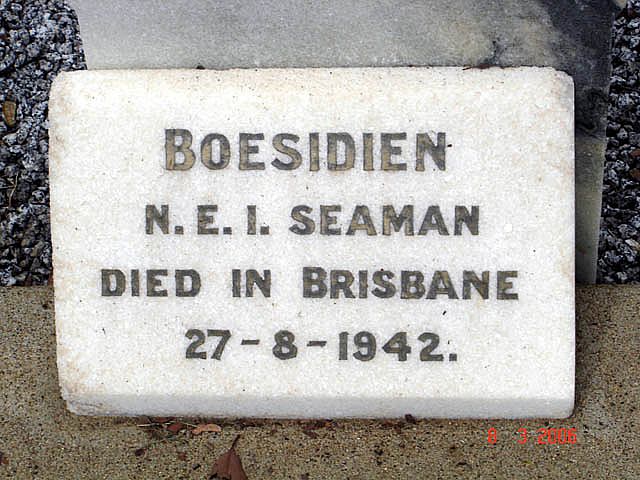
Netherlands Merchant Navy – Crew member, Maetsuycker
Buried at Brisbane General (Toowong) Cemetery
Plot 30, Row 22, Allotment 21
Boesidien (1912–27 August 1942)
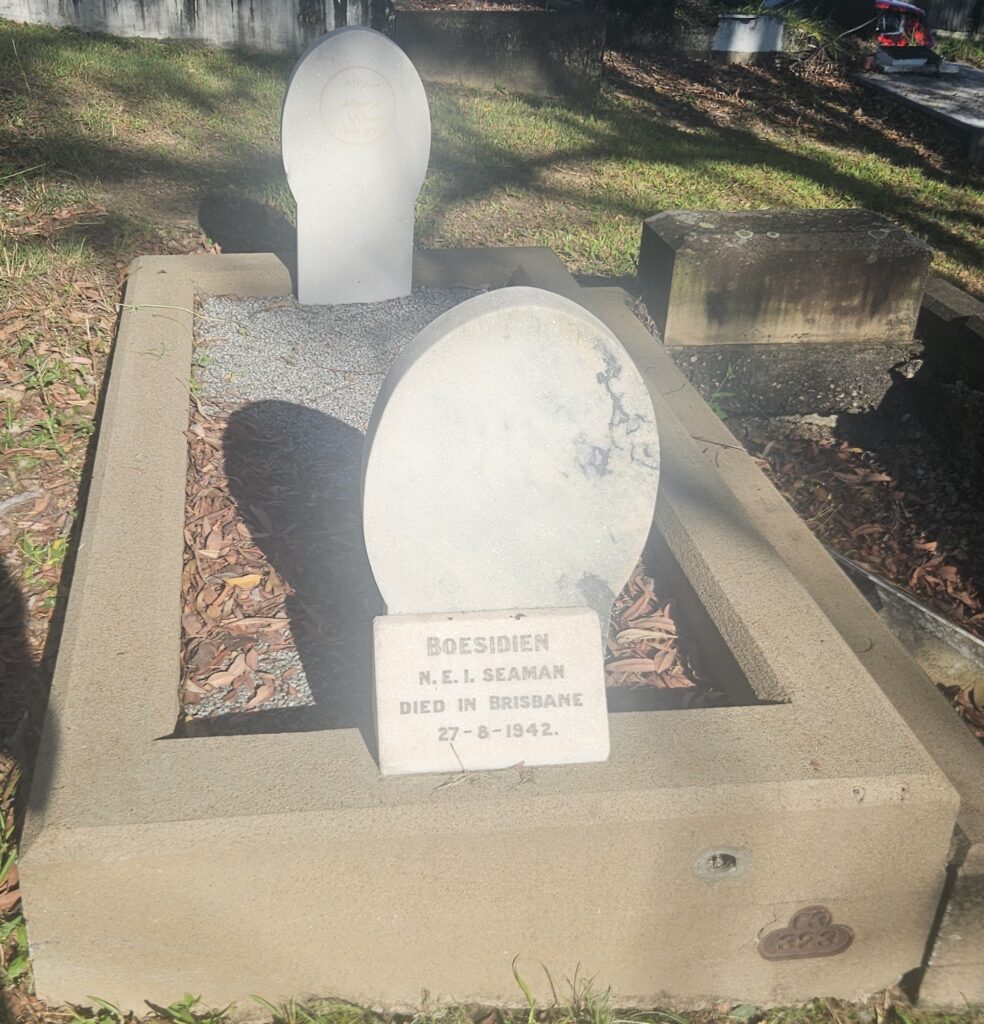
Boesidien was born in 1912 in Bengkalan on the island of Java and later served in the Netherlands Merchant Navy. He sailed aboard the MV Maetsuycker, a vessel of the Koninklijke Paketvaart-Maatschappij (KPM) line, one of the most important shipping companies operating in the Netherlands East Indies. Like many KPM vessels, the Maetsuycker played a vital role in maintaining maritime links across the archipelago and, after the Japanese invasion in early 1942, in supporting Allied evacuation and supply routes.
Following the rapid collapse of the Netherlands East Indies, many KPM ships, including the Maetsuycker, withdrew to Australia. Once there, they were placed under Allied control and integrated into wartime operations. These vessels transported troops, equipment and essential supplies to front-line areas such as New Guinea, becoming an indispensable part of the Allied logistical network in the southwest Pacific.
Samanuddin (1906–1943)
Netherlands Merchant Navy – Seaman
Buried at Brisbane General (Toowong) Cemetery
Plot 29, Row 9, Allotment 11
Samanuddin was born in 1906 in Dacca (now Dhaka, Bangladesh) and later served as a sailor in the Netherlands Merchant Navy. Like many Asian seafarers employed by Dutch shipping companies in the interwar and wartime periods, he became part of the vital maritime routes that connected the Netherlands East Indies with Australia during the Second World War.
He died in Brisbane on 14 July 1943, aged 37. His burial record lists him simply as a seaman. The funeral costs were paid by Dalgety & Co Ltd, though the reason for the company’s involvement remains uncertain. Dalgety, a major commercial and shipping agent during the war, may have acted on behalf of Dutch merchant vessels or their crews arriving in Australian ports.
The funeral was arranged by Alex Gow, a Brisbane firm whose wartime records were unfortunately lost in the 1974 Brisbane flood at Newstead, leaving few surviving details about the handling of his burial. The service itself was overseen by Chaplain Abdulus Sukban, indicating that Samanuddin received Muslim funeral rites. A Mr A. Kruger is listed as the witness to the burial.
Although the specifics of his service remain limited, Samanuddin’s presence and death in Brisbane highlight the city’s significance as a wartime centre for Allied naval and merchant activity. His story is representative of the many often-overlooked Asian sailors who supported Dutch and Allied logistics in Australia during the Pacific War.
If further information becomes available—such as his ship assignment, service records, or additional personal details—this profile will be updated.
Below is the grave of Samanuddin. To the left as it was in February 2025 and to the right in November 2025.
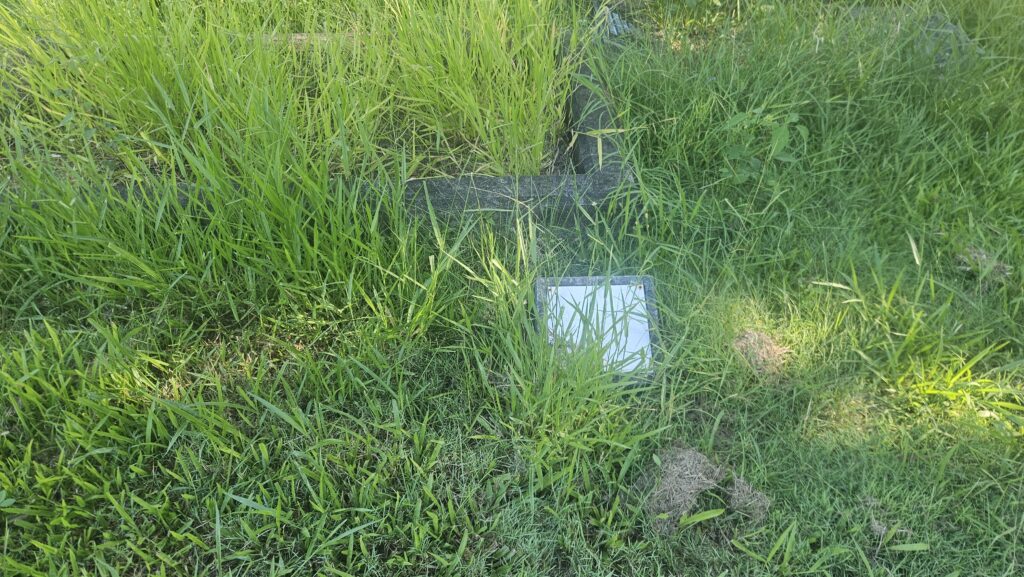
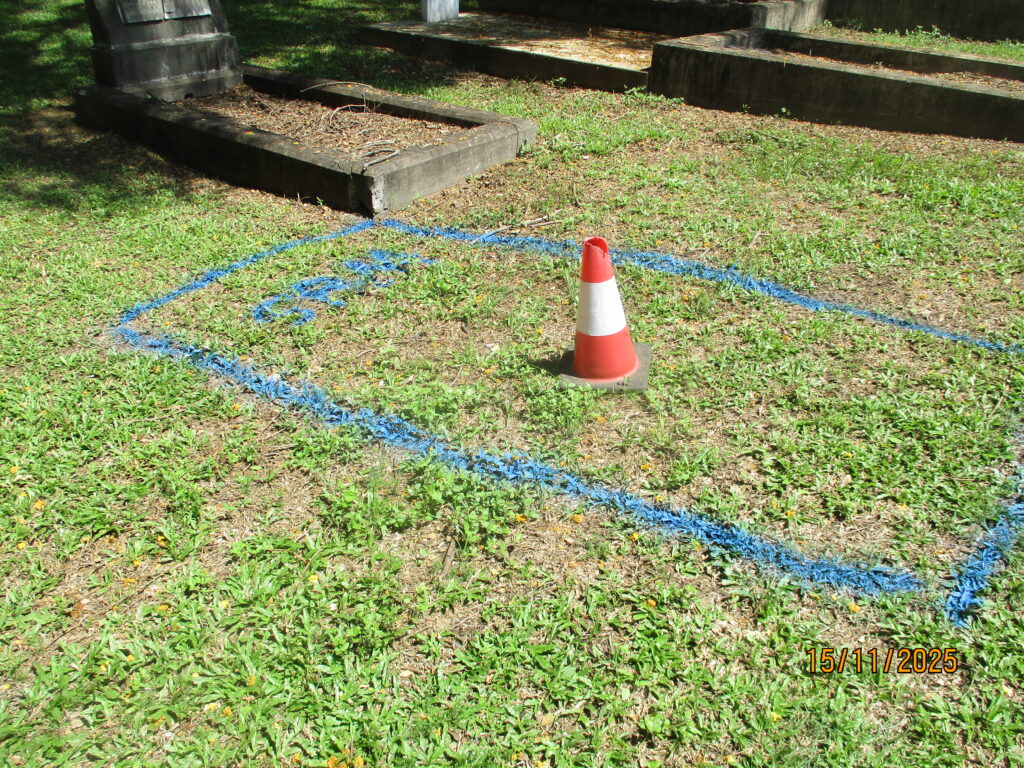
After discussions with the Oorlogsgravenstichting Nederland (War Graves Foundation Netherlands), it was agreed that a new headstone will be placed on the grave of Samanuddin. This work will be carried out on behalf of the Oorlogsgravenstichting by the Commonwealth War Graves Foundation. Once the new headstone has been installed, we plan to organise a small ceremony to commemorate all three Dutch war graves at the Toowong Cemetery in Brisbane.
Abdul Hamid (c.1918 – 24 April 1942)
Netherlands Merchant Navy – Purser (hofmeester)
Buried at Brisbane General (Toowong) Cemetery
Plot 30, Row 22, Allotment 21
Abdul Hamid served in the Netherlands Merchant Navy during the early years of the Pacific War. Although sometimes referred to simply as a seaman, official records identify him more precisely as a hofmeester, a ship’s purser responsible for provisions, shipboard administration and crew welfare.
Hamid was born around 1918, but no confirmed place of birth or family details have yet been located. Like many merchant-navy personnel displaced by the rapid Japanese advance through Southeast Asia, he found himself in Australia, which had become an important Allied hub for naval logistics and convoy operations.
He died in Brisbane on 24 April 1942 at the age of 25. No surviving records indicate the circumstances of his death. He is buried at the Brisbane General (Toowong) Cemetery in Plot 30, Row 22, Allotment 21, a section that contains several other Netherlands East Indies personnel who died in Australia during the war.
Although little is known about his life or the ship to which he was attached, Hamid’s presence in Brisbane reflects the essential but often overlooked contribution of Dutch merchant shipping to Allied operations in the Pacific. His story represents one of the many unrecorded wartime experiences of maritime personnel who passed through Australian ports during the conflict.
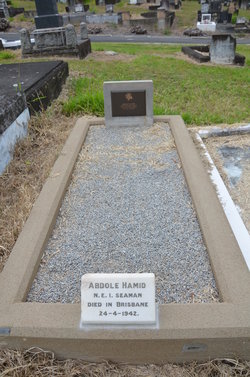
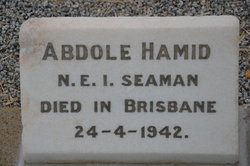
The Netherlands Merchant Navy in the Pacific
At the onset of World War II, the Netherlands possessed one of the world’s largest merchant fleets. The Japanese advance into Southeast Asia forced numerous Dutch vessels to seek refuge in Australia. These ships were vital to the Allied war effort, particularly in the South West Pacific Area, where they transported troops, equipment, and supplies to various fronts. The KPM fleet, in particular, played a crucial role in supporting operations in New Guinea and other Pacific islands.
The contributions of sailors like Boesidien and Samanuddin are commemorated at Toowong Cemetery, serving as a testament to the collaborative efforts of Allied forces during World War II.
